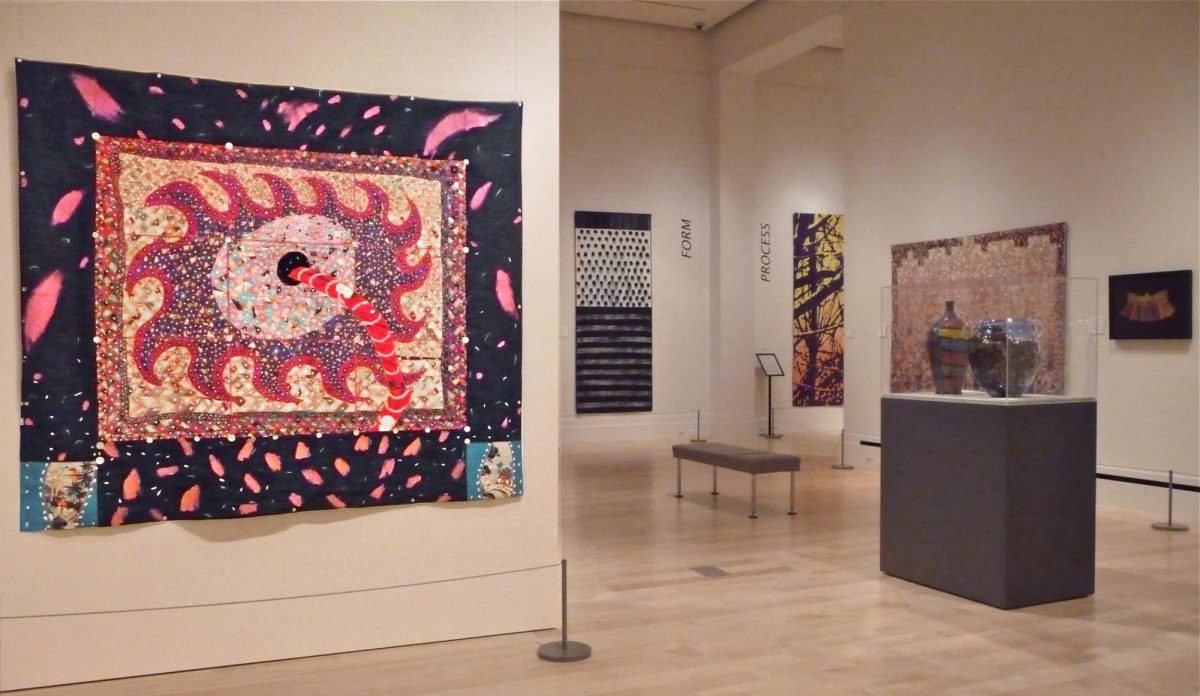
In “Late Night With the Devil,” the fear is as real as it has ever been. You are not merely watching a movie; you’re tuning into a documentary about one of the most notorious supernatural phenomena to be aired on television, chock-full of grainy, technicolor archival footage detailing how it all went down. And by the end, you’re living it.
Picture this: late-night talk show host Jack Delroy, desperately trying to reverse declining viewership, invites a possessed little girl and her guardian onto the stage on Oct. 31, 1977. Little does he know that the broadcast is about to go horribly awry and release the demon into the houses of everyone watching — that’s you. Amid a masterful, bone-chilling plot weaving together clever psychological manipulation, tasteful jumpscares and literal hypnotization, you are not a bystander. You are the product of the horror, the ultimate victim of the demonic presence that spends the film slowly eating away at the screen that shields you from its wrath. You are not just watching; you have a role to play and every right to be afraid.
Of course, the film is a work of fiction, and the supposed “found footage” sprung from the minds of directors Cameron and Colin Cairnes. Still, the faux-documentary format and slow buildup to madness suck viewers into the terror in a way that only movies like this can. There is no fear as real as when you should be afraid, and pioneers of the analog horror genre know this.
Analog horror is a subgenre of horror that typically incorporates themes and styles from the late 1900s. Throughout the story, you are frantically told by Jack Delroy to “turn off your TV sets” before you become a victim; the demon hijacks the broadcast numerous times, putting you face-to-face with it; you are the final kill as the demon ultimately breaks through the screen and into your realm. Rarely are horror films this personal, but “Late Night With the Devil” throws you into battle with its antagonist, heightening the stakes in ways only the niche analog horror genre can. It is about time it became mainstream.
Unfortunately, by way of irony, a concept this original has to be weighed down by plagiarism. “Late Night With the Devil” stands strong among critics and audiences; it opened at film festivals with 100% Rotten Tomatoes and domestically grossed leagues beyond its budget. However, the excitement slowed when eagle-eyed netizens made a jarring discovery: some of its 90s-style TV bumpers are made with Artificial Intelligence (AI) generation software. Directors attempted to do damage control through interviews with news outlets, but it was too late; the film is currently review-bombed on Letterboxd with 3.6/5 stars, and sources such as Variety and Mashable rushed to break down and criticize the scandal in several articles.
How could this news possibly be defended? Consider the directors’ statement: “We experimented with AI for three still images which we edited further and ultimately appear as very brief interstitials in the film.”
Sure, one could assert that the images in question appear for less than a collective thirty seconds, and they certainly do not take away from the film’s storytelling achievements. Regardless, this argument fails to address the root of the concern. It could have been someone’s job to create this generated artwork. If audiences let Hollywood studios get away with this, what comes next? For now, it is just three pictures, but considering recent technological advancements, the transition to a 30-second clip seems imminent. Eventually, we may reach a point at which new staff aren’t just not being hired — they’re being fired and replaced.
I am aware of how dramatic this description sounds; it is a dystopian worst-case scenario that would be unfair to solely blame “Late Night With the Devil” for instigating. It is painful to slander a film I loved so much for what seems to be mere experimentation with new tools. However, it would be naive to consider AI interference as a distant fear. Within a year of this article’s publication, Writers and Actors Guilds’ have begged for AI protection clauses in their deals for over 200 days. The data is currently unknown regarding how much stolen material, and ultimately, revenue, is being used to train art generation software. As long as money is being saved for big corporations, AI is here to stay, and it is currently on track to replace human work. Therefore, it is up to audiences to reject it in any capacity, including, but not limited to, masterpieces like “Late Night With the Devil.”
This article began with a dive into “Late Night With the Devil’s” unique artistry and creative features that set it apart from other recent releases — and ended with why you should boycott it. This is not coincidental; if there’s anything you take away from this article, it should be that AI can taint the reputation and quality of even the most infallible “art.” If “Late Night With the Devil,” which stood high atop a mountain of 100% Rotten Tomatoes, can come under fire, let Hollywood executives know that nothing else will ever be safe. From here on out, it remains our responsibility as viewers to let studios know that we will not stand for human creative spaces being infiltrated by machines, even if it seems like an outrageous hypothetical for now. It cannot be innocent forever; watch any sci-fi movie, and you’ll know that’s not how technology evolves.
“Late Night With the Devil” is available in select theaters and to stream on Shudder. This staff writer does not advise you, however, to seek it out.











































